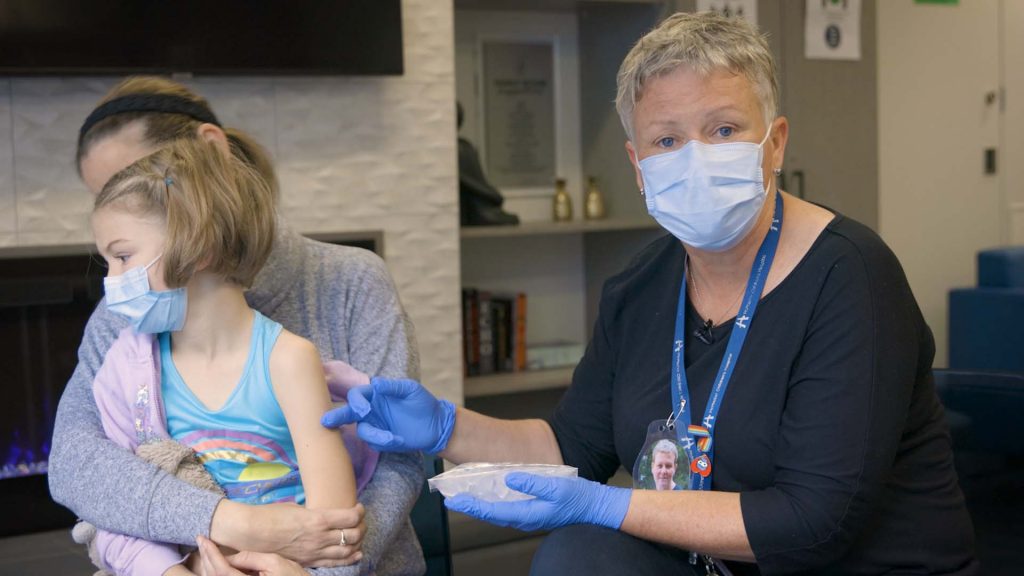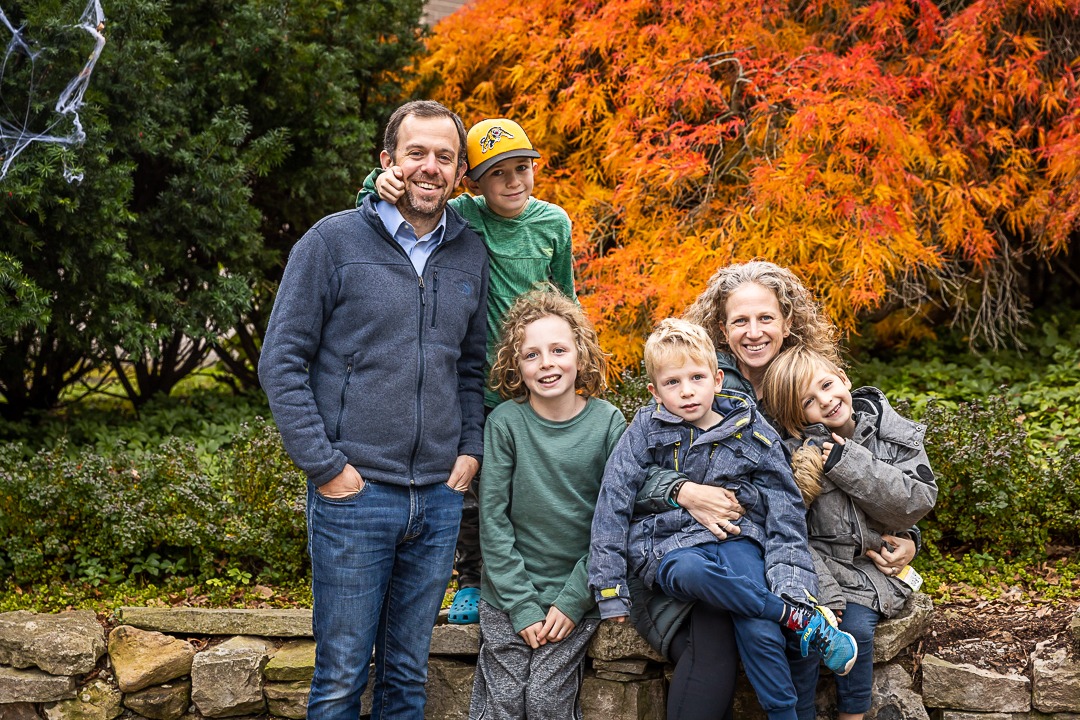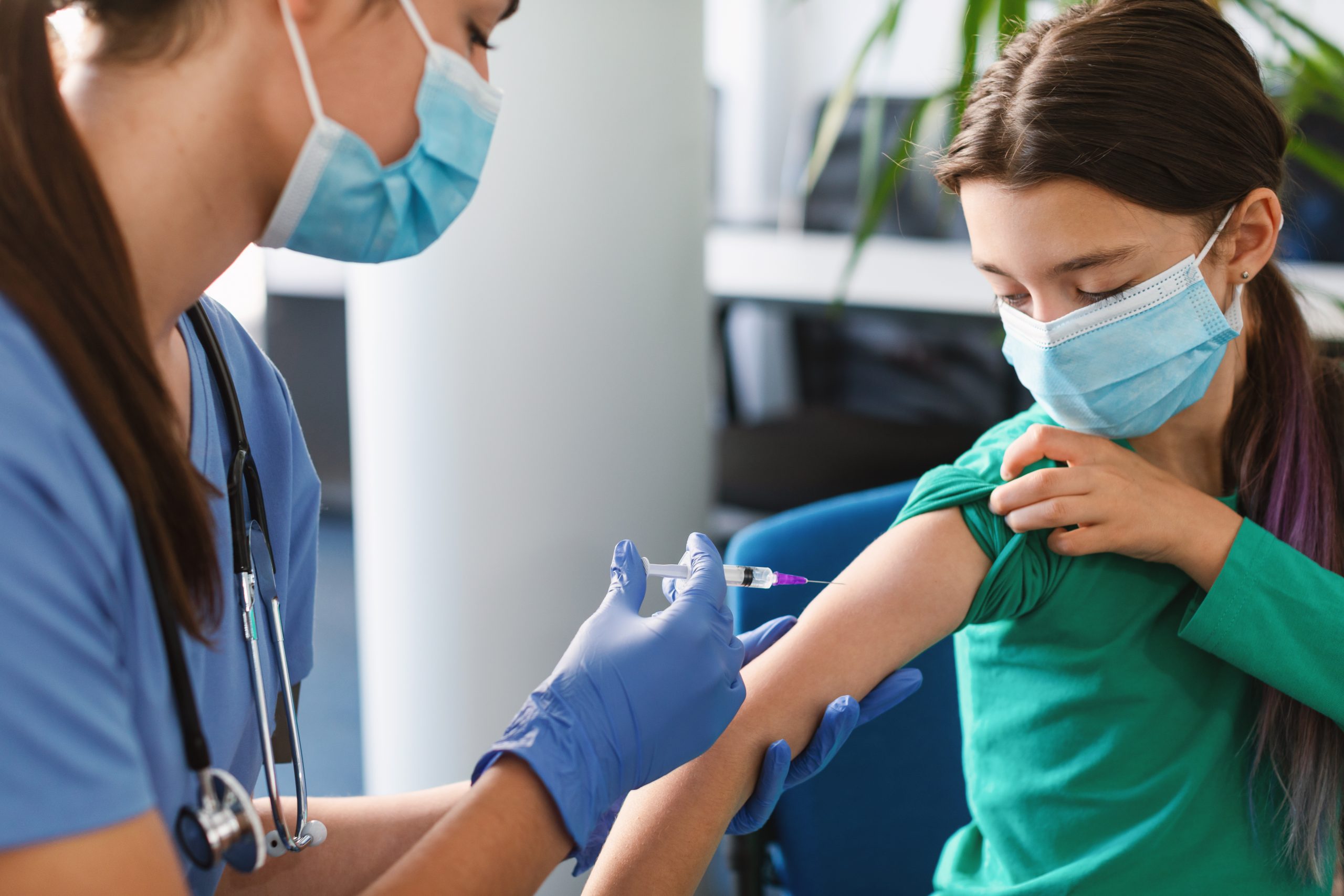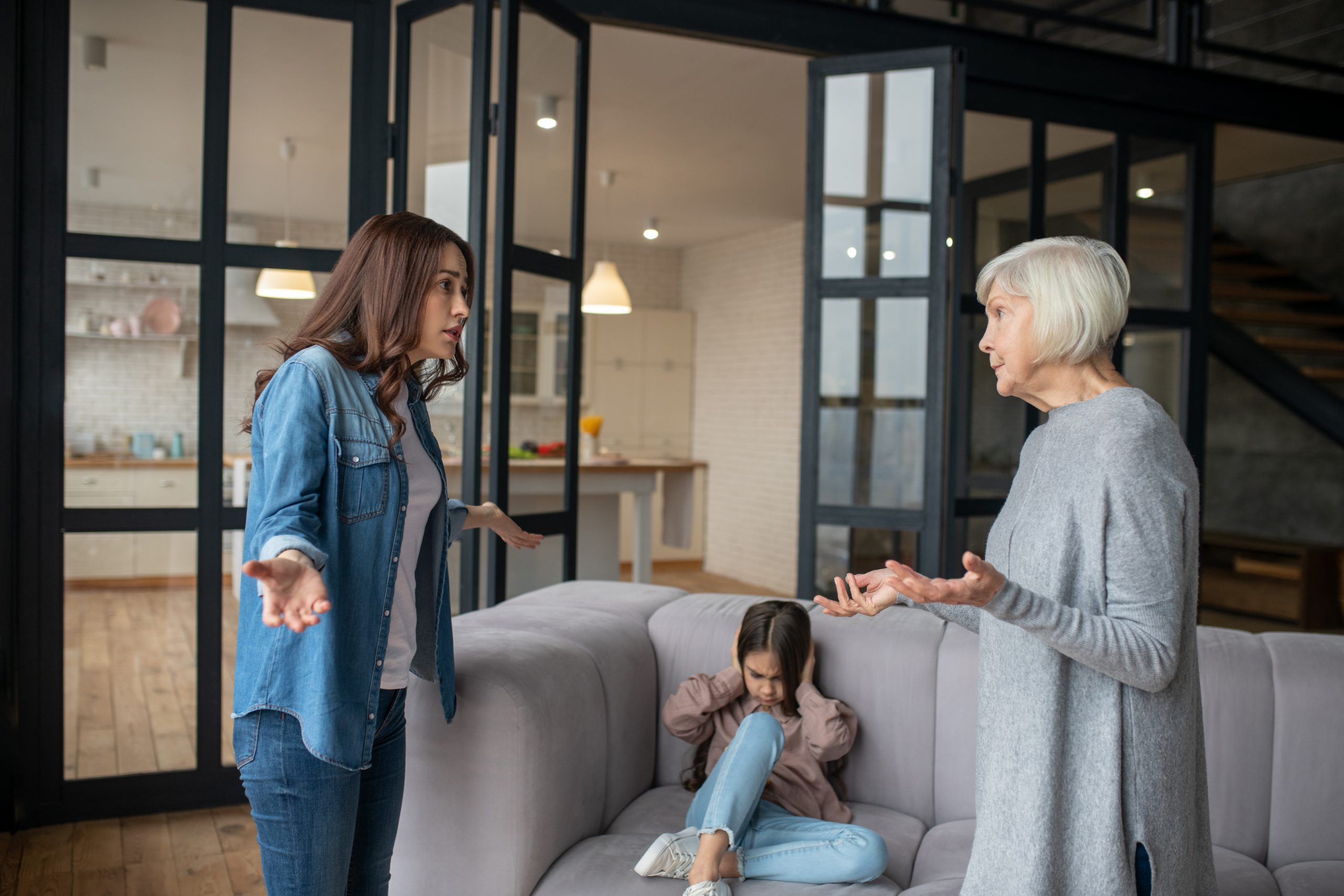
Tips for parents preparing their child for the COVID-19 vaccine
Edited video transcript
Hi everyone. My name is Tracy Akitt and I am a child life specialist at McMaster Children’s Hospital in Hamilton. Today joining me I have Charlie and her mom Jenny and they’ve come here to show you what to expect when you go for your vaccine.
Wear the right clothes
Most importantly, it’s important to ensure your child has something on that will enable the person who’s vaccinating to clearly see the upper part of their arm. I would recommend a t-shirt or a tank top underneath their jacket. As soon as you get in the building, take the jacket off and then that way you’re not fussing and taking care of that when you actually sit down with the vaccinator.
Get in a comfortable position
Jenny and Charlie are going to show you one of the position options for receiving the vaccine: sitting nicely on mom’s lap. Mom has her hands around Charlie, not too aggressively but just there just to help her hold still, because the most important part is holding still. This enables Charlie to actually look to the other side to watch her show, while the vaccinator is taking care of things behind her. This is a really nice position particularly if children might be a little bit anxious.
Another option would be if she was to give mom a hug. So in this position, mom can hug Charlie so that her arm is nicely over top of her daughter’s. Then the ice can be applied on her upper arm.
Bring some ice
One of the things I highly recommend is ice. You can bring an ice pack from home that you would normally put in a lunch bag. The beauty of ice is that it numbs the skin not only on the surface but a little bit deeper, which is so helpful, especially if people don’t like the sensation of an injection. Ice will actually take 90 per cent of it away, if not all of it. Most youth when I support them in the clinic with using ice, don’t even know that the injection itself has taken place. So we would take the ice and we would apply it. It would sit against the skin probably the length of time to say the alphabet. We want to make sure that it’s in the right location and is actually numbing the skin. When that’s done, the vaccinator would take the cold wet cloth to clean the skin, and then would poke. Then a band-aid would be put on over top.
Stay calm and positive
The intent of the receiving the vaccine is not to trick them, but we have to be realistic with what children can actually handle. This younger age group – sort of five to nine range – in their mind they know what they need to do. But they’re still learning the ability to regulate those emotions or keep them under control. They’re still practicing those skills.
One other tip I’d like to give parents through this process is to realize that your children respond the way you respond. So if you’re talking about your fear or concerns about having needles in front of your child, they’re going to pick up on that and it will probably make them anxious or worried as well.
It’s really important to have a positive attitude about going to get the vaccine and think about who’s the best person to take them for the vaccine. If you’re afraid of needles, it might be better to have a friend or a grandparent or someone else bring them to support them, so that the entire time they feel like everything is very positive.
To recap:
- Wearing the right clothes to make sure we can have our poke easily.
- Bringing something we love with us and some distraction to help make it a little bit easier.
- Thinking about what positions might be best for both safety and comfort.
- And incorporating things like ice or deep breathing to help the child feel relaxed.






